Go’s ZIP archive extraction starts looking from the start of the compressed data.
- Aug 2025
-
www.crowdstrike.com www.crowdstrike.com
-
- Feb 2025
-
en.wikipedia.org en.wikipedia.org
-
The transformation mapping method is applied to exhibit distinct boundaries between incoming and outgoing data. The data flow diagrams allocate control input, processing and output along three separate modules.
-
- Jun 2023
-
support.google.com support.google.com
-
to recover loss of observability
Elaborate... what do you mean? How does it do so? Do they mean recover from loss of observability?
-
- Feb 2023
-
en.wikipedia.org en.wikipedia.org
-
One approach to avoiding this kind of problem is regression testing. A properly designed test plan aims at preventing this possibility
The antecedent of "this possibility" is unclear. (Perhaps it used to be clear and then someone else made an edit and added a sentence in between?)
Tags
Annotators
URL
-
- Sep 2022
-
github.com github.com
-
I saw the repo previously, but missed the split functionality, I thought it was more like a template repo.
Tags
Annotators
URL
-
-
geohot.github.io geohot.github.io
-
Before asking the question, how do I build AGI, you first must ask the question, what would I recognize as AGI?
Wrong. Here, I'll show you:
Forget about AGI for a moment. Instead, pretend we're talking about pecan pie. Most people probably can't answer the question, "What would I recognize as a pecan pie?" (or a sandwich). And yet thousands of people are able to make (and thousands more people are able to enjoy) pecan pie all the time—probably every day.
-
- Aug 2022
-
www.w3.org www.w3.org
-
A disadvantage seemed to me to be that it is not obvious which words take one to particularly important new material, but I imagine that one could indicate that in the text.
I don't understand this.
-
- Apr 2022
-
theoutline.com theoutline.com
-
One significant point of design that Tschichold abandoned was the practice of subordinating the organization of all text elements around an invisible central axis (stay with me here.) What that means is that a designer builds out all the design elements of a book from that nonexistent axis “as if there were some focal point in the center of a line which would justify such an arrangement,” Tschichold wrote. But this, he determined, imposed an artificial central order on the layout of a text. It was an illogical practice, because readers don’t start reading from the center of a book, but from the sides.
Okay, I stuck it out like the author here requested but I'm still left wondering what any of this is in reference to.
-
-
hapgood.us hapgood.us
-
Why not add one more category — Personal Wiki — tied to nothing specific, that I can reuse wherever I see fit?
This is insufficiently explained.
-
- Mar 2022
-
twitter.com twitter.com
-
ReconfigBehSci on Twitter: ‘RT @CT_Bergstrom: I also dislike the choice of axis scales. I don’t mind line graphs with axes that don’t go to zero (https://t.co/EpPNR9Lx…’ / Twitter. (n.d.). Retrieved 22 March 2022, from https://twitter.com/SciBeh/status/1477181158425251840
-
- Oct 2021
-
github.com github.com
-
serverFetch name is unclear. That the docs need to say in bold that it's external is a bit of a code smell.
-
- Sep 2021
-
blog.system76.com blog.system76.com
-
Still not clear what this daemon does...
And when you say switch display between HiDPI and LoDPI, what does that do? If it's a high-DPI display, does it emulate a low-DPI experience, for example by scaling/zooming / using 2 output pixels for every 1 in the input picture.
Is this the same as the fractional scaling feature?
The GUI for it:
- lets me enable/disable (what happens if I disable?)
- Change Mode: "Enable to render LoDPI displays at HiDPI resolution". What does that mean?
I tried disabling both of those options but
- hidpi-daemon was still running
- I noticed no visible change
So I just killed the process. Again, no visible change. So again, what does this daemon actually do for me? What is the benefit of having it running? (I'm not the only one wondering: https://www.reddit.com/r/pop_os/comments/lwsf4a/hidpi_daemon/ , https://www.reddit.com/r/pop_os/comments/lxpfpl/hidpidaemon_was_a_huge_battery_drain_for_me_had/ )
-
-
stackoverflow.com stackoverflow.com
-
This question is broad and not very clear -- with the result that the following answers cover quite different scenarios and use cases.
-
- Jun 2021
-
www.pnas.org www.pnas.org
-
their popularity may be aresult of cumulative advantage or the tendency to evoke anemotional response
Again, wild speculation. Popularity is not necessarily as a result of tendency to evoke an emotional response but perhaps the fact that they play a powerful position in society or "famous" in the first place. Merely rousing emotional responses in others would not lead to centrality of anyone's position in a network, will it?
Tags
Annotators
URL
-
- Apr 2021
-
commons.wikimedia.org commons.wikimedia.org
-
What does the (dashed) arrow for
fork()mean? Why does it point that way? Which one is a fork of / has forked which one?
-
-
unix.stackexchange.com unix.stackexchange.com
-
Unfortunately, unlike what is described in SWdream solution, --ignore-missing-args has no impact on vanished files. It will simply ignore source arguments that doesn't exist.
-
-
store.steampowered.com store.steampowered.com
-
A small set of levels with obtuse goals and scoring leaves the player uncertain of what exactly they are playing.
-
- Mar 2021
-
en.wikipedia.org en.wikipedia.org
-
This shows that compatibility may be relevant.
-
A synonym of co-hyponym based on same tier (and not hyponymic) relation is allonym (which means "different name").
-
- Feb 2021
-
github.com github.com
-
If ActiveModel deals with your nouns, then ActiveInteraction handles your verbs.
It's a good analogy, but I think it's misleading/confusing/unclear/incorrect, because parts of ActiveInteraction are ActiveModel, so I guess ActiveInteraction deals with your nouns too?
-
- Jan 2021
-
platform.ui.dev platform.ui.dev
-
Now for the record, there is one way to fix the code above without useReducer. You may remember that you can pass a function to the updater function useState gives you. When you do this, that function will be passed the current state value. We can utilize this to clear out our dependency array without having to use useReducer.
this is unclear
-
- Nov 2020
-
github.com github.com
-
I am curious how do you "organize" your work
-
-
www.klaviyo.com www.klaviyo.com
-
Chevy tried an all-emoji press release about a new car that came across as very forced, proving that less is more when it comes to using emojis in emails. Not to mention, it’s almost impossible to decipher the message they’re trying to communicate.
-
-
wresch.github.io wresch.github.io
-
Important caveat: in the combined expression, if the middle command has a non-zero exit status, then both the middle and the rightmost command end up getting executed.
I don't think that is surprising, is it? Since && and || have the same order of precedence. So I think this is more of a clarification than a caveat.
I think this is just because:
a && b || c is equivalent to: (a && b) || c (so of course c gets evaluated if
(a && b)is false (that if eitheraorbis false).I think they just mean, in this case:
bedmap && mv || failif
mvfails, thenfailstill gets executed.Easier to see with a simpler example:
⟫ true && false || echo 'fail' fail ⟫ false && true || echo 'fail' failBetter example/explanation here: https://hyp.is/-foxmCVXEeuhnLM-le_R4w/mywiki.wooledge.org/BashPitfalls
The caveat/mistake here is if you treat it / think that it is equivalent to if a then b else c. That is not the case if b has any chance of failing.
-
-
github.com github.com
-
However, those descriptors gave a bit too much flexibility/dynamism to the class shape in order to be efficiently optimizable.
I think this:
However, those descriptors gave a bit too much flexibility/dynamism to the class shape in order to be efficiently optimizable.
means:
However, because those descriptors were gave so much too much flexibility/dynamism to the class shape, it could not be be efficiently optimized.
rather than:
In order to be efficiently optimizable, those descriptors gave much flexibility/dynamism to the class shape.
In other words that flexibility/dynamism hindered optimization; it wasn't for the purpose of optimization (as "in order to be" could be interpreted as).
The "too much" wording also contributed to the confusion for me.
But maybe just dropping "in order" would have been enough for me:
However, those descriptors gave a bit too much flexibility/dynamism to the class shape to be efficiently optimizable. or However, those descriptors gave a bit too much flexibility/dynamism to the class shape for them to be efficiently optimizable.
-
- Oct 2020
-
github.com github.com
-
To be honest, I'm not sure what networking activity docker-compose is doing directly vs. what the docker daemon is doing.
Tags
Annotators
URL
-
-
www.basefactor.com www.basefactor.com
-
You may want to quickly check which validations apply to a field form without having to deep dive into your component code.
Clarified a bit further on: https://hyp.is/R9zbNhjOEeuWFzuvIEknzw/www.basefactor.com/react-final-form-validation-fonk
Tags
Annotators
URL
-
-
github.com github.com
-
first sighting: use of superscripts like this
I like it. Nice and concise and understandable.
- s¹  critical
- s²  important
- s³  nice to have
- s⁴  low
- s⁵  inconvenient
But in other cases, the abbreviation is quite unclear and ambiguity:
Like, what does "pr" mean in these cases?
priority? Doubt it.
- pr¹  chore
- pr²  docs
- pr³  feature
- pr⁴  fix
- pr⁵  performance
- pr⁶  refactor
- pr⁷  style
Pull Request? Doubt it. But maybe?
For axes that are quantifiable, like severity, using a number makes sense. But what benefit is there in including a number in these (platform?) labels?:
- p¹ ⋅ browser
- p² ⋅ linux
- p³ ⋅ mac
- p⁴ ⋅ windows
I think this would have been better and clearer (in that fewer people would be like huh? and wonder what it means):
- platform: browser
- platform: linux
- platform: mac
- platform: windows
-
-
en.wikipedia.org en.wikipedia.org
-
Once the View is "done" then it should be closed for modification.
Tags
Annotators
URL
-
-
-
I lack a little an opportunity to create the internal context without the need for the creation of one more component.
Tags
Annotators
URL
-
- Sep 2020
-
stackoverflow.com stackoverflow.com
-
Actually just returning the loginDaoCall works fine. I dont really get what's different as it is the looked like it was the same instance, but probably not.
So the posted answer wasn't necessary/correct? Which part of the answer was incorrect/unneeded?
I wish this OP comment included the full version of code that worked.
I don't understand this OP comment. Wasn't OP already returning
loginDaoCall? So maybe the only thing they could mean is that they just needed to change it toreturn loginDaoCall.then(...)instead...That would be consistent with what the answer said:
the promise returned by the further .then() does also get rejected and was not handled.
So I guess the unnecessary part of the answer was adding the
return true/false...
-
- May 2020
-
stackoverflow.com stackoverflow.com
-
We stopped using SSH keys, Vít Kotačka answers helped us understand why it was failing before.
-
-
github.com github.com
-
Despite our best efforts to deal with all of those issues, over the course of time we fall behind. When you look at an issue it's sometimes unclear whether or not we intent to provide the functionality you propose, whether or not we fix the bug, whether or not the issue is a duplicate of another one. In order to restore a reasonable level of clarity we annually perform a House Keeping Iteration in which we go through all open issues. We categorize, label, fix, and close issues. This results in a wave of notification which is hard to deal with (our apologies) but in the end there is better understanding of what will happen to your ideas.
-
-
www.iubenda.com www.iubenda.com
-
(This can include any verifiable consenting action including sending an email or clicking a check-box).
By "sending an email" are you referring to a user signing up by sending an email to a certain address? I might have been less surprised by that notion if it was <2000, but is this even done anymore? I haven't seen it done for a while. Almost everyone signs up for things via web forms, it seems.
-
-
ico.org.uk ico.org.uk
-
Records must be kept in writing. Most organisations will benefit from maintaining their records electronically.
Isn't "kept in writing" different from "maintaining their records electronically"? How can digital data be kept in writing? Is that meant figuratively then? Why would they use figurative language here? What do they mean by "kept in writing"??
-
- Mar 2020
-
www.portainer.io www.portainer.io
-
You'll just need to access the port 9000 of the Docker engine where portainer is running using your browser.
Tags
Annotators
URL
-
- Dec 2019
-
josiahwitt.com josiahwitt.com
-
To make our local testnet, we’re going to need to give our sbot a place store it, and this is where that name field comes in. Create a new folder in your home directory called .ssb-test (or .anythingyourwantreally). Inside .ssb-test we’re going to make a file called config. Open up a node REPL and generate new shs and sign keys with crypto.randomBytes(32).toString('base64'). We want a new shs key so that our testnet messages won’t be gossiped to the main network and we want a new sign key so that our testnet messages can’t be gossiped onto the main network. Copy this into the config file you made, filling in your keys where specified. { "caps": { "shs": "your shs key here", "sign": "your sign key here" }, "port": 8007, "ws": { "port": 8988 }, "ssb_appname": "ssb-test" } We specify ports 8007 and 8988 so that our testnet can run in parallel with another sbot on the main network and we specify ssb_appname to be the name you gave your network. You will notice that most of the config settings aren’t mentioned here and that’s because for the rest the defaults are used, we only need to specify settings we want changed. Once you save your config you’re almost ready to go, you just need to tell sbot which network you want to run on. To do that, you need to set the environment variable ssb_appname, this is what sbot looks for. So run export ssb_appname="ssb-test" and we’re good to go. (Note: you may want to also add this command to your .bash_profile if you don’t want to run it in every bash session you want to access your testnet in.)
This part doesn't work as expected or I don't fully understand the procedure.
If I do the
export ssb_appname="ssb-test", and launchssb-server, there is a new.sbb-test/secretfile which contains my new identity. When I put the new shs and sign keys, generated from the node REPL, as indicated, and I try to run any sbot command I get the message about not being able to connect ssb-server, despite of already started it.
-
- Nov 2019
-
jgregorymcverry.com jgregorymcverry.com
-
Very anxious at meeting, expectations are unclear and often change unexpectedly.
unclear expectations. This is a common thread.
-
- Jan 2019
-
www.theguardian.com www.theguardian.com
-
Avoiding meat and dairy is ‘single biggest way’ to reduce your impact on Earth
Overall scientific credibility: 'debated' among the scientists who analyzed this article.
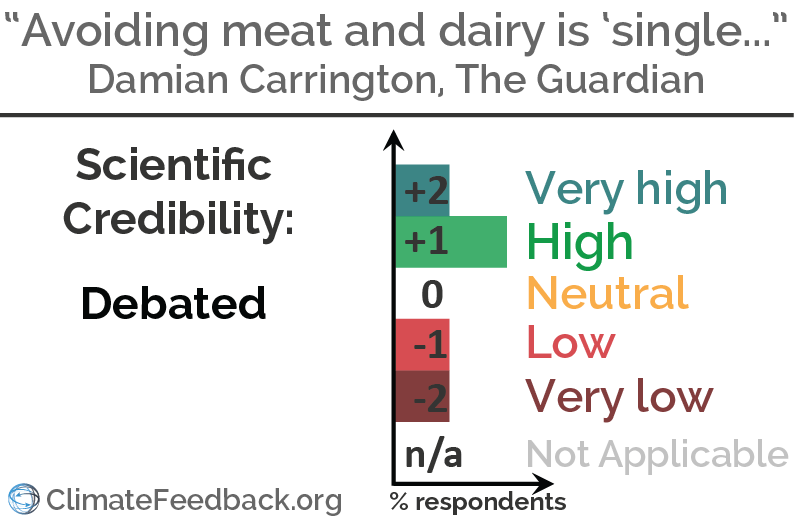
Find more details in Climate Feedback's analysis
-
-
-
Stem Cell Treatment Could Be a Game-Changer for People With MS <div class="inner-container"> <img src="https://via.hypothes.is/im_/https://timedotcom.files.wordpress.com/2017/04/time-health-stock-tubes-3.jpg" alt="" title=""> </div>
Overall scientific credibility: 'neutral' to 'high', according to scientists who analyzed this article.
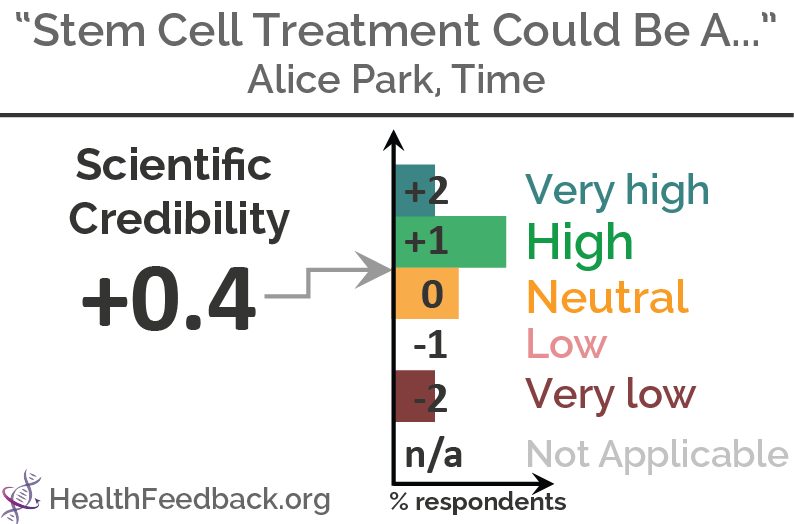
Find more details in Health Feedback's analysis
-
- Dec 2018
-
www.youtube.com www.youtube.com
-
Climate Science and the Myths of Renewable Energy
Overall scientific credibility: 'high', according to scientists who analyzed this article.
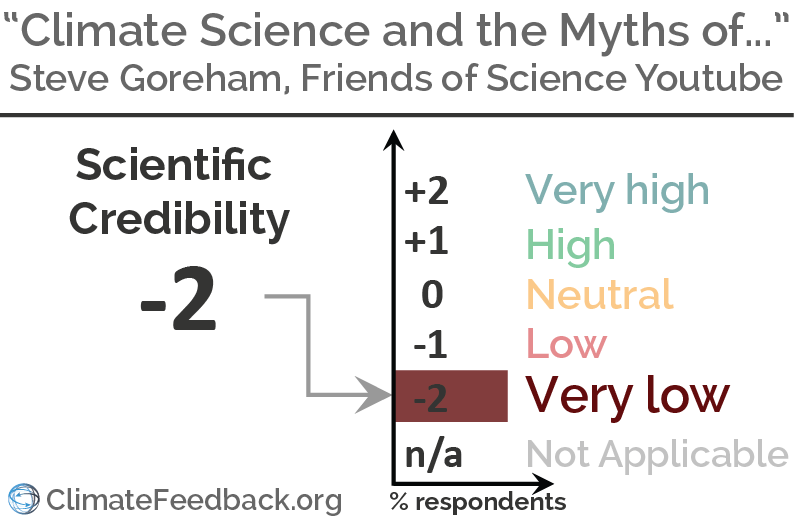
Find more details in Climate Feedback's analysis
-
- Nov 2018
-
creativecoding.soe.ucsc.edu creativecoding.soe.ucsc.edu
-
In past decades, neural nets used smoother non-linearities, such as tanh(z) or 1/(1+exp(−z)), but the ReLU typically learns much faster in networks with many layers, allowing training of a deep supervised network without unsupervised pre-training28
Não entendi bem essa parte: "... allowing training of a deep supervised network without unsupervised pre-training".
-
- Oct 2018
-
www.theguardian.com www.theguardian.com
-
Scientists say halting deforestation 'just as urgent' as reducing emissions
Overall scientific credibility: 'neutral' to 'high', according to scientists who analyzed this article.
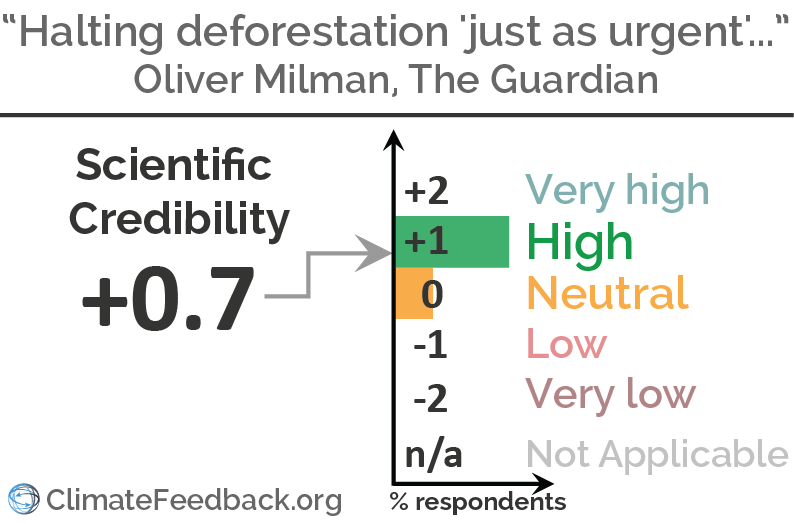
Find more details in the annotations below and in Climate Feedback's analysis
-
- Feb 2018
-
archive.org archive.org
-
or
"I have, in the following little volume, collected a few of these, the Love-Songs of a single province merely, which I either took down in each county of Connacht from the lips of the Irish-speaking peasantry - a class which is disappearing with most alarming rapidity - or extracted from MSS, in my own possession, or from some lent to me, made by different scribes during this century, or which I came upon while examining the piles of modern manuscript Gaelic literature that have found their last resting-place on the shelves of the Royal Irish Academy." (iv)
The way Hyde makes reference to sources is casual and non-specific. It would be difficult for a reader to access his sources. Because we have such little insight, it is important to be alert to potential biases in the collecting and editing process.
If we can identify consistencies among the anthologized songs in terms of their depiction of love and lovers, and/or among songs which are excluded from the anthology, we will have reason to regard the very partial disclosure of sources with suspicion.
As I have already noted, part of Hyde’s project is to bring the reader into contact with language which has an ‘unbounded’ power to excite the Irish Muse. Perhaps part of the way he contrives this encounter is to control the kind of subject matter that will appear to the reader as that which occurs most naturally in the Irish language.
-
- Dec 2017
-
crumplab.github.io crumplab.github.io
-
Clearly, a between-subjects design would be necessary here.
It is not very clear to me as to why a between-subject design is automatically necessary here
-
-
crumplab.github.io crumplab.github.io
-
g
Not sure what the "g" stands for in this section.
-
-
crumplab.github.io crumplab.github.io
-
Factorial Designs
-
-
crumplab.github.io crumplab.github.io
-
51
I think this "51" is not supposed to be there.
-
- Jul 2017
-
nymag.com nymag.com
-
The Uninhabitable Earth
Overall scientific credibility: 'low', according to scientists who analyzed this article.
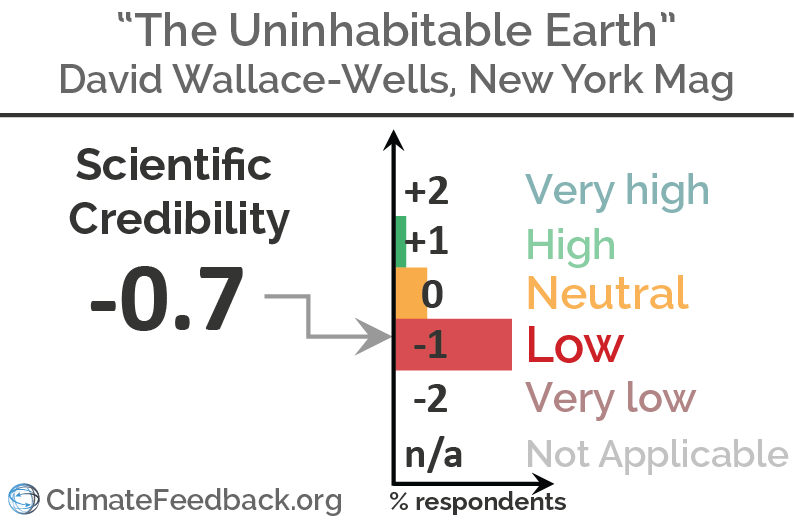
Find more details in the annotations below and in Climate Feedback's analysis
-
- Mar 2017
-
netzfueralle.blog.rosalux.de netzfueralle.blog.rosalux.de
-
innovative SMEs
Abkürzung einführen!
Schwarzmeer-Einheits-Schiff??
Small and Medium-sized Enterprises, oder?
-
nts; fortunately, it’s still the case with those movements that transition to leadership positions in their cities
Dieser Satz ist mir unverständlich und scheint mir grammatikalisch durcheinander.
-
ttach to being to urban problem
Entweder ist mein Englisch zu beschränkt oder hier ist irgendwas nicht ganz korrekt
-
Of course, such AI-‐powered services can be used to then further optimize how the city runs and operates; the problem that is the city
Diesen Satz, insbesondere den zweiten Teil, verstehe ich nicht.
-
the gig
"gig" im Sinne von "Auftritt"?
-
firms like China, Russia, Japan, the US, Germany, and
Firmen wie China, Russland, ...Deutschland und... Ist das Ernst gemeint??
-
Jane Jacobs
??
-
Big F
Aufzählen!
-
- Nov 2016
-
www.knewton.com www.knewton.com
-
Stuff stuff stuff stuff
Too many stuff's
-
- Sep 2015
-
en.wikipedia.org en.wikipedia.org
-
Cholinergic neurons provide the primary source of acetylcholine to the cerebral cortex,
I think what is meant is "cholinergic neurons in the basal forebrain", or "the cerebral cortex receives projections from cholinergic neurons", as we presume that acetylcholine is coming from cholinergic neurons.
Tags
Annotators
URL
-